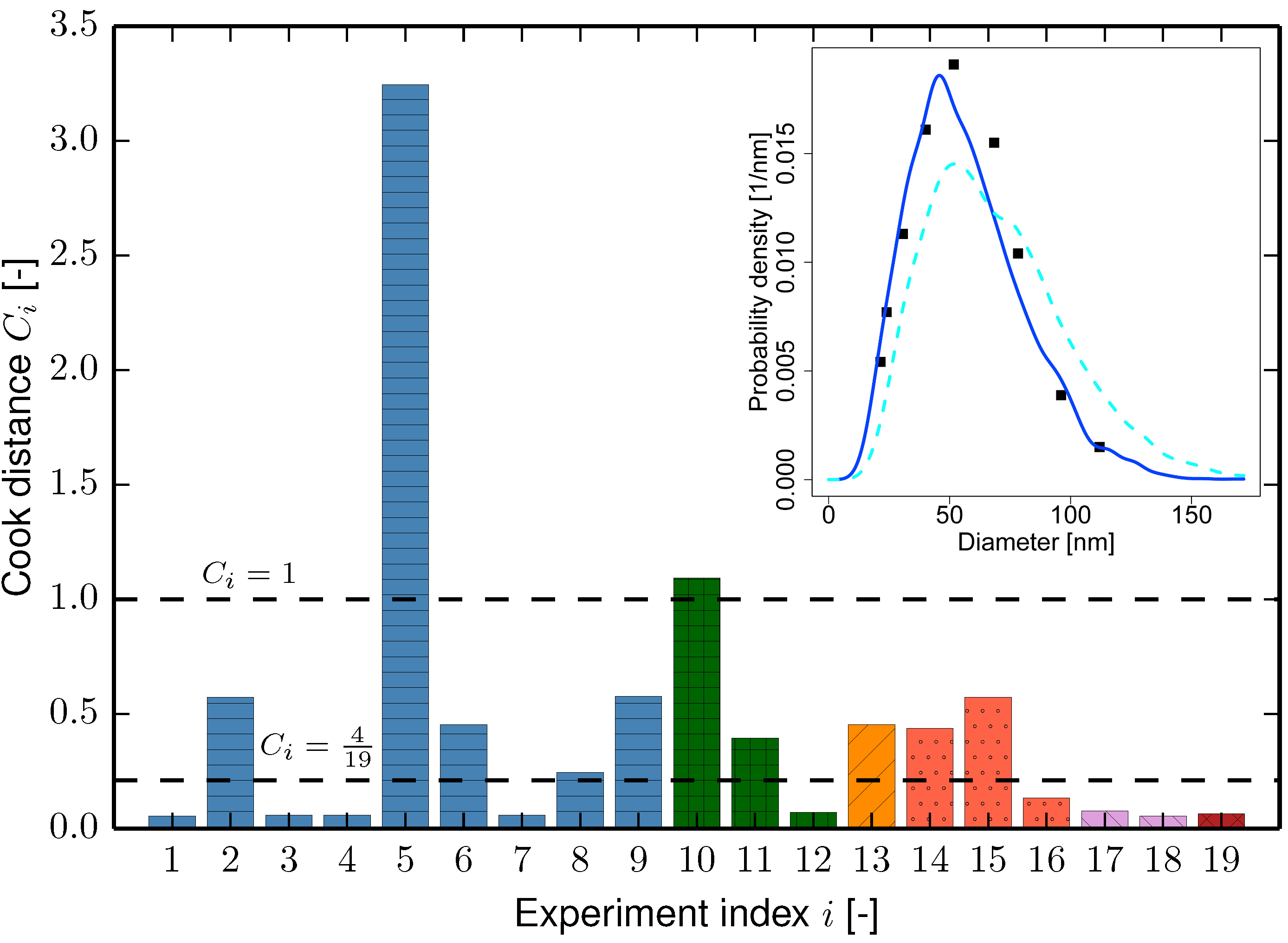Technical Report 162, c4e-Preprint Series, Cambridge
Outlier analysis for a silicon nanoparticle population balance model
Reference: Technical Report 162, c4e-Preprint Series, Cambridge, 2015
- Silicon nanoparticle synthesis is modelled using a detailed population balance model.
- An omission-based regression influence analysis is carried out.
- The impact of individual experimental observations on parameter estimates is quantified.
- Outliers are identified, suggesting areas for model improvement.
 We assess the impact of individual experimental observations on a multivariate population balance model for the formation of silicon nanoparticles from the thermal decomposition of silane by means of basic regression influence diagnostics. The nanoparticle model includes morphological and compositional details which allow representation of primary particles within aggregates, and of coagulation, surface growth, and sintering processes. Predicted particle size distributions are optimised against 19 experiments across ranges of initial temperature, pressure, residence time, and initial silane mass fraction. The influence of each experimental observation on the model parameter estimates is then quantified using the Cook distance and DFBETA measures. Seven model parameters are included in the analysis, with five Arrhenius pre-exponential factors in the gas-phase kinetic rate expressions, and two kinetic rate constants in the population balance model. The analysis highlights certain experimental conditions and kinetic parameters which warrant closer inspection due to large influence, thus providing clues as to which aspects of the model require improvement. We find the insights provided can be useful for future model development and planning of experiments.
We assess the impact of individual experimental observations on a multivariate population balance model for the formation of silicon nanoparticles from the thermal decomposition of silane by means of basic regression influence diagnostics. The nanoparticle model includes morphological and compositional details which allow representation of primary particles within aggregates, and of coagulation, surface growth, and sintering processes. Predicted particle size distributions are optimised against 19 experiments across ranges of initial temperature, pressure, residence time, and initial silane mass fraction. The influence of each experimental observation on the model parameter estimates is then quantified using the Cook distance and DFBETA measures. Seven model parameters are included in the analysis, with five Arrhenius pre-exponential factors in the gas-phase kinetic rate expressions, and two kinetic rate constants in the population balance model. The analysis highlights certain experimental conditions and kinetic parameters which warrant closer inspection due to large influence, thus providing clues as to which aspects of the model require improvement. We find the insights provided can be useful for future model development and planning of experiments.
Material from this preprint has been published in Combustion and Flame.
PDF (1.3 MB)



